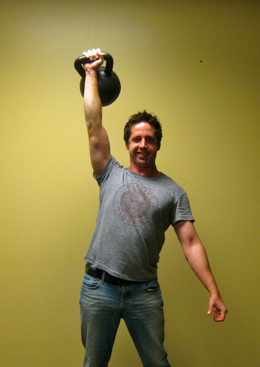Two popular training ideas often get confused for the same thing.
The problem is that most people don't actually know what either of them actually are in reality.
Lets get clear right now:
Balance Training Is One Of Three Things:
1.) Your eyes getting better at telling you where your body is in space
Your highest order balance system is actually your eyes. Most of our cues for balance we get from things we see. This is why balancing is harder for you when you close your eyes. When someone who is off balance is relying primarily on visual cues, they usually take a step to regain their balance.
2.) Your inner ear getting better at knowing where your body is in space
Your second highest order balance system is your inner ear canals. This is actually very trainable, and a great place to spend your training time if you want to improve your balance. When someone is relying primarily on their inner ear, they will usually move their hips (changing/moving their center of gravity) to regain balance.
3.) Your joints getting better at knowing where your body is in space
This is where BOSU balls and stability balls and dyna disks do most of their work. Which shows why those are such poor balance trainers – they train only the lowest level of balance. When someone relying primarily on information from their joints to regain their balance will usually move from their ankles (pushing hard through their heels or toes).
Core Training Is One Of Four Things:
1.) Muscles of the torso preventing flexion (rounding forward) of the spine
A great example of this would be a deadlift or a two-hand kettlebell swing. While your glutes and hamstrings are creating the movement, your core muscles brace so your spine doesn't snap in half.
2.) Muscles of the torse preventing extension (arching back) of the spine
A great example of this would be a plank. An evil wheel rollout would also work.
3.) Muscles of the torse preventing rotation of the spine
A good example of this would be throwing a punch: where the legs create rotational force in the hips, the core tightens up to transfter that power to the shoulders and then into the arms and fists. Another good example would be a one arm kettlebell swing – the core muscles prevent the spine from twisting. Single leg bridges, single leg planks, and opposite arm opposite leg raises also hit rotational core strength.
4.) Muscles of the torse preventing extension lateral (sideways) flexion
Suicase deadlifts would be an awesome example of this. Side planks also work.
Balance, Core Training, and Fat Loss
Core training can make a difference for fat loss, in so much as a stronger core can allow us to do more work by lifting heavier or lifting more sets and reps. More work = more fat loss.
Balance training is usually less of an issue for fat loss. It's worth distinguishing what it is because so many trainers are still telling people to do an exercise standing on a BOSU ball or on one leg, and say that it's core training because it includes balance. Which is like something that the Mad Hatter would say.

In truth, you are going to get a more effective fat loss workout with the most middle of the road stabilized workout – doing full body exercises with both feet on the ground:
1.) Unstable Full Body sucks for fat loss because: In a squat on a BOSU ball you won't be able to use as much weight as you would squatting with both feet on the ground. Less work = less fat loss.
2.) Stable Full Body is awesome for fat loss because: A barbell squat will be a very full body exercise with nearly as much weight as is possible for your body to lift. More work = more fat loss.
3.) Stable Isolated sucks for fat loss because: A leg press would be even more stable than a barbell squat, but in adding stability it sacrifices some of the full body goodness of a standing barbell squat. Less work = less fat loss.
These are all guidelines for an advanced fat loss client.
Where specialized, intelligent balance training might be a great use of time for an athlete, it might not be something that a fat loss client would want to spend a ton of time on.
A fat loss client is going to want to do the most work in the least amount of time. Stable full body exercises like squats, kettlebell swings, pullups (and assisted pullups), standing military presses are all examples of ideal fat loss movements.
Again, they're moves that are a lot of work. I would argue that they are the most work. It's these cold, unforgiving strength movements that yeild the best results for a fat loss client.
 by Josh Hillis, RKC2, CPT, PES, ZMIS
by Josh Hillis, RKC2, CPT, PES, ZMIS
Josh recommends Turbulence Training Fat Loss Intervals
Josh is the author of The Stubborn Seven Pounds.
Josh has been featured in USA Today and the Denver Post, and quoted in the Los Angeles Times
Leave a Reply